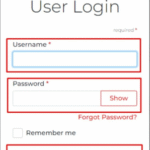Why Telegram is Becoming India’s Favorite Platform for AI-Powered Learning

Telegram wasn’t built to be an education platform. Let’s get that out of the way first.
It started as a secure, fast, anti-WhatsApp alternative for people who wanted to talk politics or share memes without aunties chiming in. It was quiet. Encrypted. And mostly ignored. Until, one day, someone uploaded a full NEET coaching archive there.
And just like that, India woke up.
Suddenly, Telegram became a strange and wonderful mash-up: part classroom, part underground library, part tutoring black market, part AI-enhanced learning hub. In 2025, it’s no longer just a messaging app — it’s where India goes to learn smarter, faster, cheaper, and often… a bit secretly.
But Wait — Why Telegram? Why Not Some Fancy EdTech Platform?
Because Telegram doesn’t judge you.
It doesn’t throw ads at you every five seconds. It doesn’t force you to buy “Premium Plus Max Gold” to unlock question banks. It doesn’t crash during live tests. And more importantly — it’s open.
Anyone can build anything. Upload anything. Automate anything.
And in a country where people are still hunting for adda52 customer care numbers or refreshing win adda balances on slow 3G, Telegram’s lightweight design, low data usage, and fast bot support feel like a blessing coded by the gods of jugaad themselves.
Telegram gives agency to learners and teachers. And when you plug AI into that equation — oh boy.
Telegram + AI = Learning on Rocket Fuel
If Telegram is the body, AI is the caffeine in its bloodstream. Over the past two years, AI-powered Telegram bots have gone from quirky tools to full-fledged micro-tutors.
Want to practice coding? There’s a bot that gives real-time challenges and explains your mistakes in Hinglish. Need UPSC prep? Join a group where the admin is a GPT-powered assistant trained on previous years’ questions. Stuck on calculus? Voice-message a question and get step-by-step solutions in under 30 seconds — complete with diagrams.
The bots don’t sleep. They don’t take breaks. They don’t care if you’re studying at 4:30 a.m. in your PG near zynga office in Bangalore after a night shift.
They just… help.
And the groups? They’re fast, raw, chaotic — but alive. Learning on Telegram feels like being inside a massive, buzzing classroom where the teacher is AI, and the backbenchers are sharing PDFs of IIT notes like underground samizdat.
The Rise of Micro-Communities
Forget “one-size-fits-all” edtech.
Telegram thrives because it supports micro-learning tribes. You want CAT prep in Marathi? There’s a group. Poker strategy for low-stakes poker circle grinders? Found it. AI/ML interview prep tailored for Tier 2 engineering grads? Already pinned with 500+ notes and daily quizzes.
What makes it even more powerful? Many of these groups now include custom-trained AI bots that answer questions based on that group’s specific content history. Think of it like an AI librarian who knows not just the syllabus, but your group’s vibe.
Telegram doesn’t build top-down. It grows sideways — organically, chaotically, and wonderfully.
Case Study: PokerSingh & Real-Time Strategy Training
Let’s step sideways for a second — into the world of poker.
PokerSingh.com, originally launched as a content and strategy platform, now quietly runs one of the smartest poker learning communities on Telegram. Their AI bots dissect hands posted by users, simulate probable opponent ranges, and recommend optimal actions using real-time data analytics.
In short: someone posts a hand, and in under 10 seconds, the bot replies like a poker guru on steroids — “Fold. 67% chance you’re being trapped. Villain’s range skewed towards missed draws.”
This isn’t theory. It’s practical, real-time behavioral feedback, built right into your chat window. No app downloads. No paid tiers. Just brutal, surgical learning — on the platform India’s already using for everything else.
This model is spreading into other domains too: language acquisition, logical reasoning, finance. The format? Learn fast, learn now, learn in chat.
Learning Without the Labels
One of Telegram’s biggest strengths is that it doesn’t “look” like a school.
There are no dashboards with progress bars. No AI avatars giving motivational speeches. No formal assessments (unless you want them). And for a generation burned out by academic pressure and deeply suspicious of authority, this is liberating.
Telegram makes skill development feel like side-chat. And sometimes, that’s what makes it stick.
You’re not “studying Python.” You’re DMing a bot for help with a freelance task. You’re not “learning poker strategy.” You’re chatting with your group about whether calling a jam on the river with a mid-pair is idiotic or genius.
Learning slips in sideways, like a con man with a good heart.
It’s Not All Sunshine, Though
Telegram’s openness is also its curse. For every legit AI-powered tutor bot, there’s a spammy channel peddling pirated content or selling fake credentials. Some learners don’t even realize they’re being fed outdated, sometimes dangerous information — just packaged with slick formatting and emojis.
And as with every AI tool, bias, hallucination, and over-confidence are real issues. A bot that confidently tells you 9 is a prime number is worse than no bot at all. It’s false confidence in a hoodie.
This is where platforms like PokerSingh, or communities curated by experienced admins, matter. They build with quality in mind. Not just volume.
Final Thought: Telegram Is India’s Underground University
You won’t find it in the brochures. No billboards. No celebrity endorsements.
But Telegram, powered by AI, is quietly becoming the go-to learning space for India’s next-gen students, hustlers, gamers, and side-project dreamers. It’s fast, flexible, fiercely local, and — when done right — smarter than most bloated edtech platforms.
In a country where AI coaching centres in Hyderabad still battle with outdated whiteboards, Telegram offers voice bots, instant feedback, peer groups, flashcards, mini-courses, gamified quizzes, and… silence when needed.
It’s learning, but on your terms.
So the next time someone scoffs and says “Telegram? Isn’t that just for movie leaks and crypto bros?” — you can smile, open your phone, and show them the future.
It’s probably in a pinned message.

Hy Vee Huddle: A Complete Informational Guide

The Connection Between Accounting Firms And Regulatory Compliance

Why Smart Startups Choose Custom AI Business Solutions Today

The Digital Lifeline: How Technology is Revolutionizing Addiction Recovery

From Clicks to Clients: Why Trust-First Local SEO Wins the Long Game

my sdmc – Complete Informational and Professional Guide

elida schoology – A Complete Informational and Professional Guide

MySDMC SSO: Complete Guide to the Manatee County Single Sign-On System








